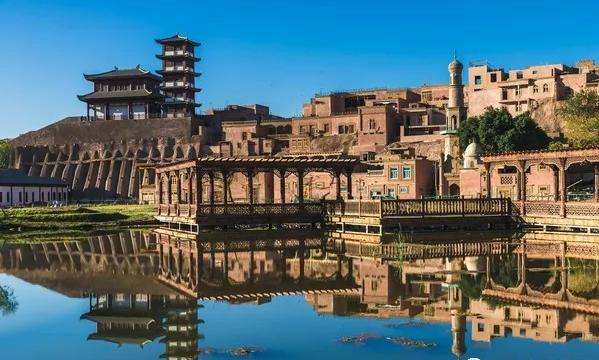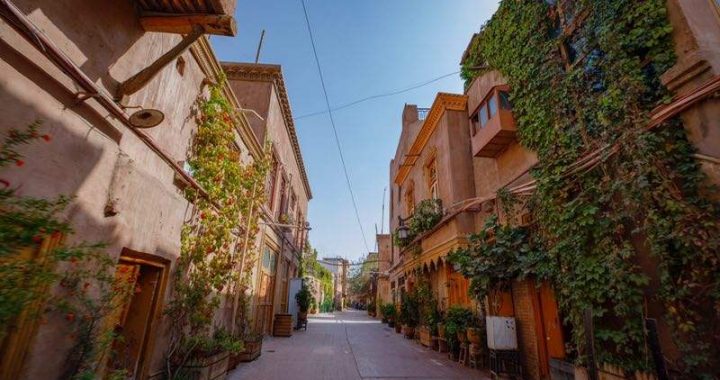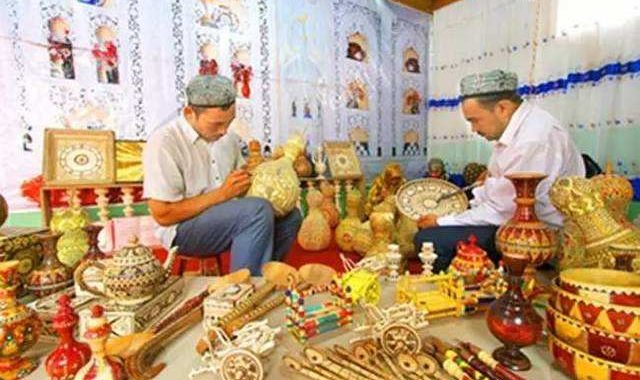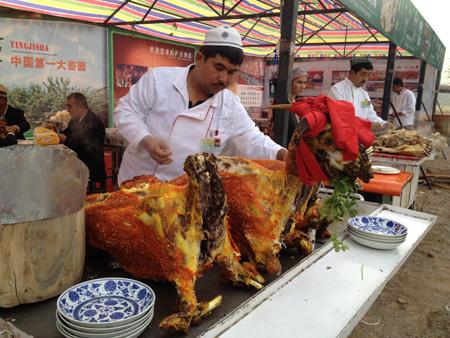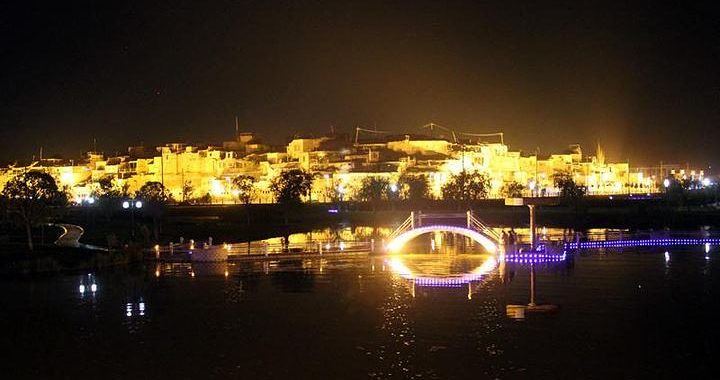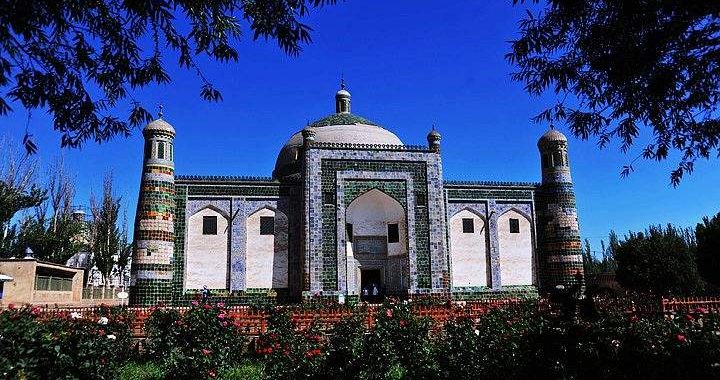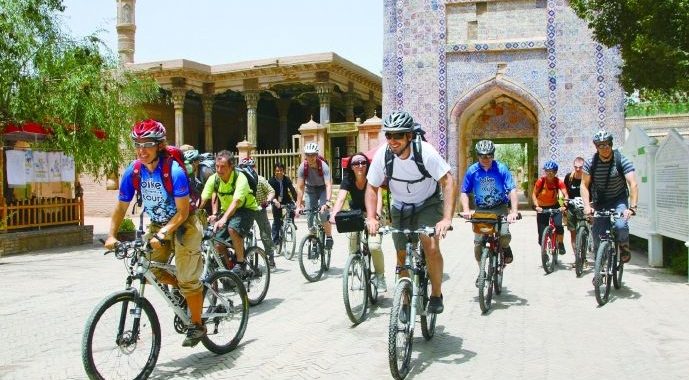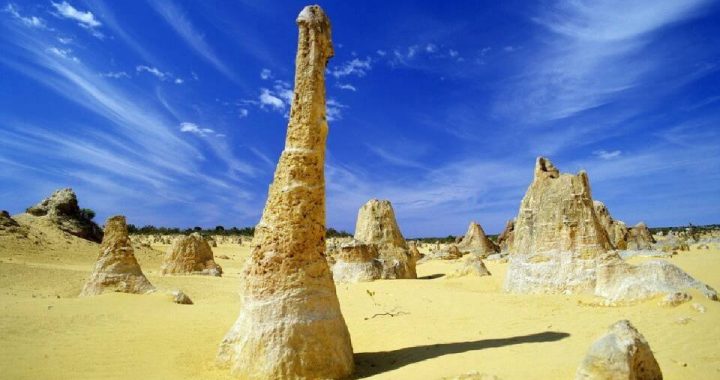Workshops of earth pottery in Kashgar
4 min readZunun Asimjan explained as he was working, “River mud is needed to make earth pottery. The mud in our Tuman River is good. Sometimes we dig mud there and we don’t need to pay for it.” He laughed. He added water to the mud and began to knead the mud hardly, like kneading flour. This was the first step to make earth pottery. Zunun Asimjan said, “We still use our ancestors’method to make earth pottery. The entire procedure from the selection of mud, sieving to kneading shaping, painting, engraving, enameling, firing and drying, is all done with hands. The lump of mud in his skillful hands was rolling and turning evenly. When he felt it was even enough, he patted it, as if patting the cheeks of his little grandson. The following procedure needed to be finished with tools. The old man put the lump of mud under a homemade wooden shaft disk and step on the pedal at the lower position constantly, with his hands kneading the rotating mud to make different shapes.
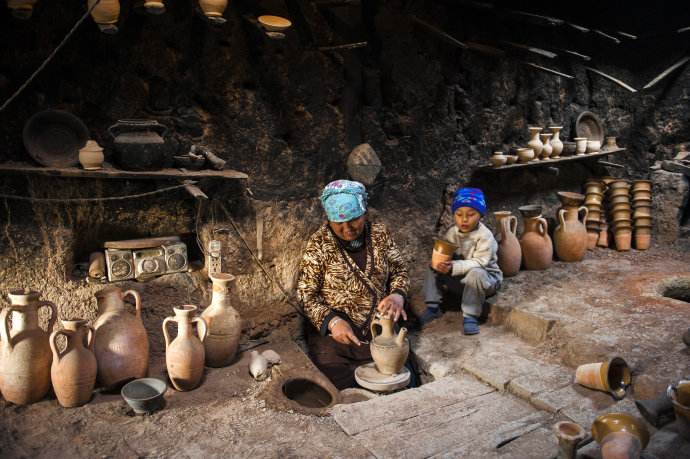
This was the second step. In the past, earth pottery was closely related to the living customs of the Uygurs: the mud bowl used to contain food is called tawak, the pottery basin used for kneading flour or containing food, the earth pottery basin used for showering, the wurouke (pottery kettle) used for washing hands, the kup(pottery crock used for containing water), the taixitaike(pottery basin for washing clothes) and the kuzha (earth pottery water bucket)used for carrying water…
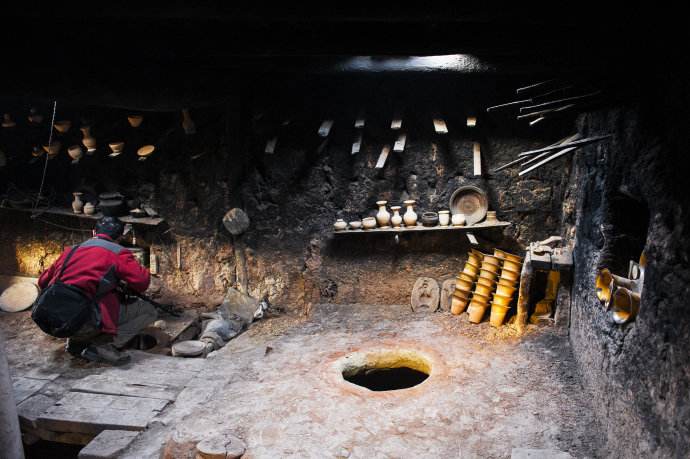
The third step was to place the base on a little wooden rack beside wall to dry them after it was formed. The dried base was then be enameled. The third step was to put the enameled earth pottery into the kiln and fire and shape it. Zunun Asimjan took out a fired earth pottery and gestured, “The color and method we enamel the earth pottery was handed down from our ancestors. The color used to enamel is made from mineral substance. We crumble the stones of various colors we picked on the Gobi Desert or mountains, and then pulverize them with a stone mill, stir the powder into mud, apply them on the base and fire it, and finally make it an exquisite faience or work of art. From the technical process, the firing of earth pottery is extremely similar to the firing of pottery.
Surprisingly, the process of making earth pottery was finished without any blueprint or model, completely relying on the feeling and experience of the artisan. This needs long periods of practice. In some sense, it also needs great artistic imagination.
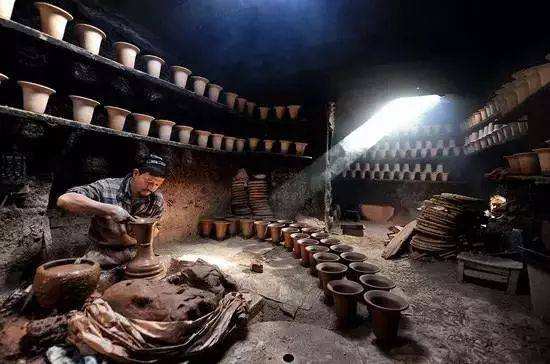
What Yasheng said indirectly approving the characteristic of this ancient handicraft, “The kilns we use for firing earth pottery are mostly vertical kilns, fired with woods at a temperature of 800C to 1,100C. Earth pottery used as utensil or decoration needs to be enameled twice and fired to from the under-glaze- decoration.” If there is any difference, that is the shape and decoration style of earth pottery. Exactly speaking, the shaping of some pieces of earth pottery would inevitably show the style of Central Plains. This is because the Uygurs in Gaochang (today’s Turpan and Komul regions) of the Song Dynasty believed in Buddhism and Manicheism, so the ancient earth pottery made prior to the Yuan Dynasty were usually decorated with elements in these two religions. After accepting Islamism, the earth pottery of the Uygurs began to have an Arabic flavor, represented by the earth pottery saint pot used to wash before worshiping. Since then, the cultural characteristics of Islam have been imprinting on earth pottery. Earth pottery is used by common people in Xinjiang oasis and has become a unique scene in the life of the Muslims.
There is only less than 30 traditional earth pottery workshops left in hathpace residence.
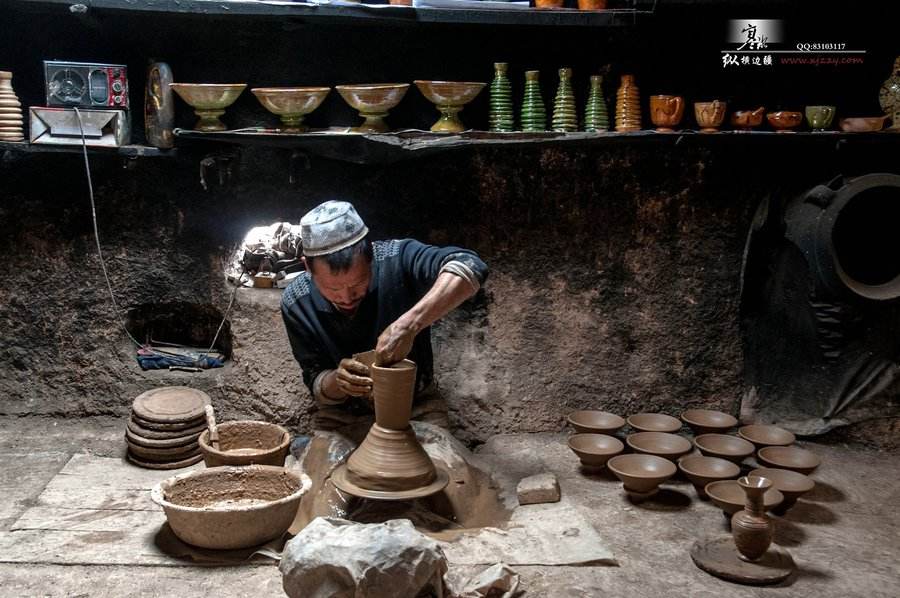
There were five or six hundred masters engaged in earth pottery at the peak, but now there are only over 50. Zunun Asimjan is one of the best. But, no one knows how long he could stick to. One hundred years ago when western industrialization was booming, Marx, who was acutely aware of the contradiction between industrial civilization and traditional values,overvalued the old handicraft. But one hundred years later, many traditional handicrafts have become heritage due to the development of industrial civilization, something that Marx might have not expected.
When Zunun Asimjan turned his head to look at the earth pottery that had already been made, the light of sunset was falling on his body. Handicraft of ethnic groups is no longer means of living, but rather a carrier of inheriting their culture and an indispensible lively symbol in life. The handicraft of these ethnic groups has aroused their cultural memory and aesthetic standard and conveyed family affection, friendship and love. These earth pottery glitters brilliant on the mountains, grassland, planes, oases and basins.

